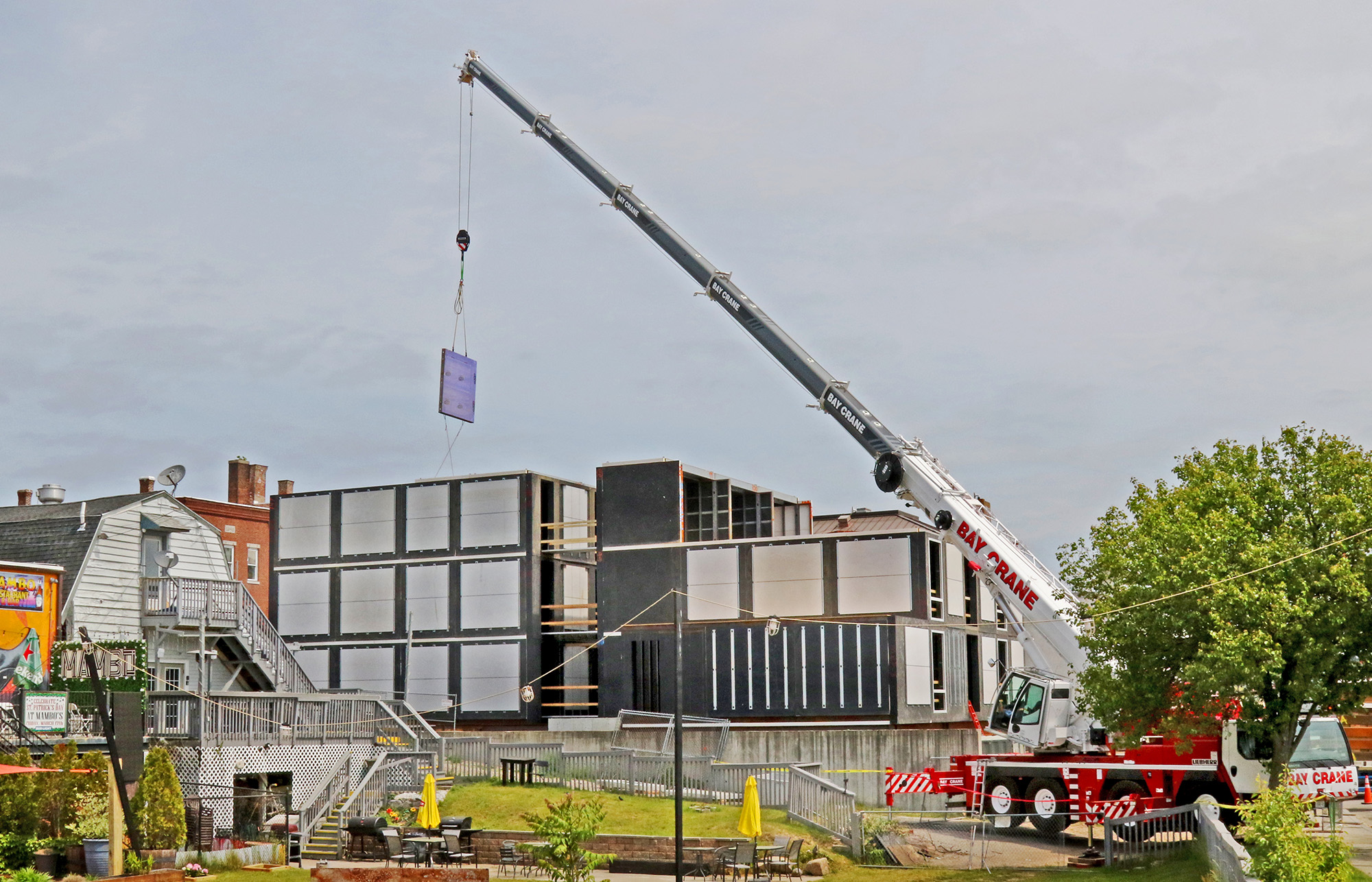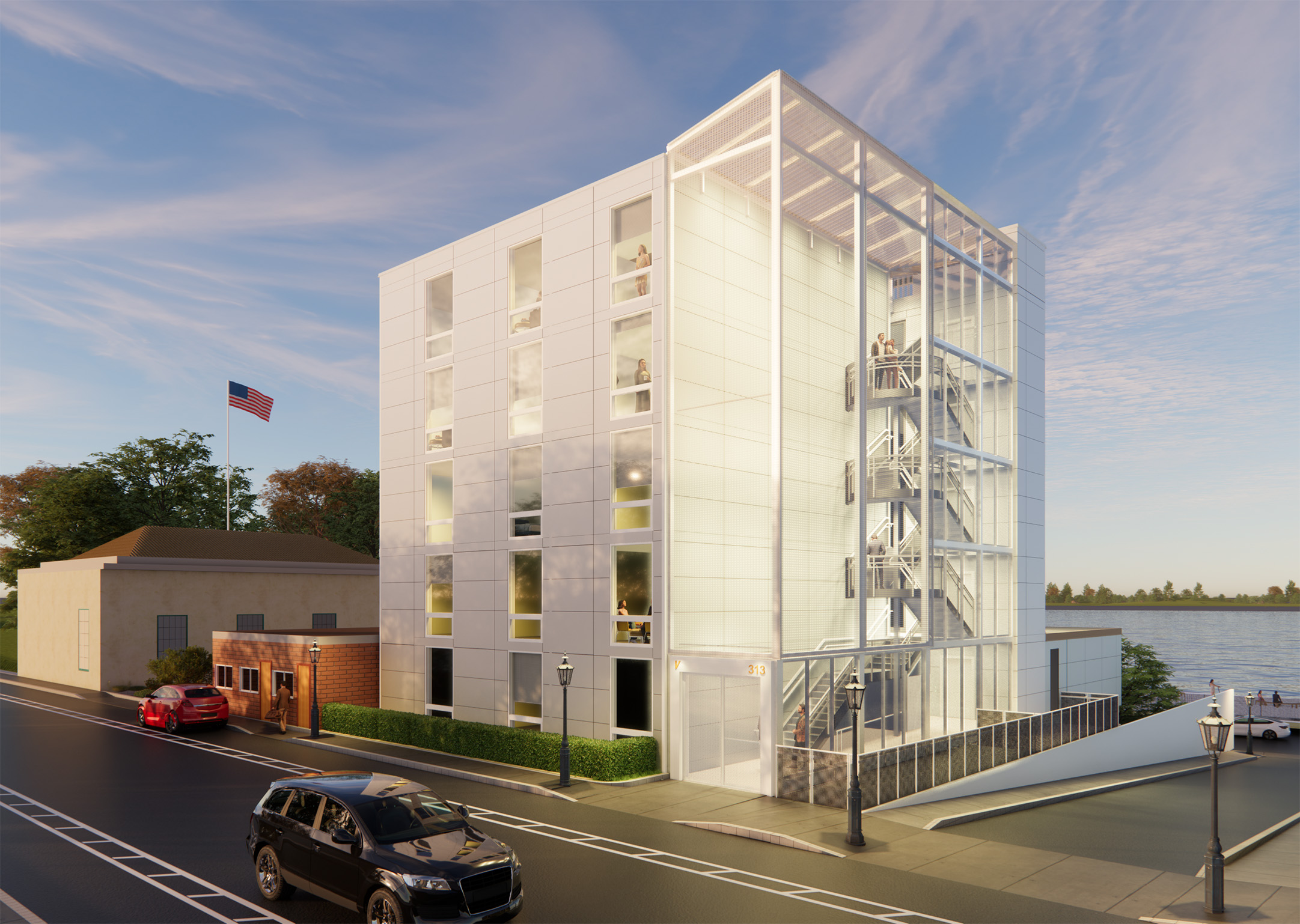Investment firm Mastry Ventures and LENx, the venture arm of homebuilder Lennar, have co-invested in Vessel Technologies’ next-generation housing product. Vessel, a housing product development company, aims to cultivate a pathway to creating attainable housing across the country.
The company’s housing system is focused on “reimagining the apartment building as a consumer product by creating exciting, sustainable, and user-centric housing at attainable prices,” according to Vessel. This is done by prefabricating wall and ceiling components in Vessel’s own manufacturing facility—cutting costs and time compared to traditional construction methods.
Vessel Technologies’ All-Electric Prefab Building System
The Vessel system is 100% electric; solar panels affixed to the rooftop deliver all of the power required for occupants. With the company’s aim for sustainability, Vessel uses no paint and instead utilizes a proprietary recyclable wall panel system. According to Vessel, its facade system is also twice as energy efficient as built-to-code alternatives.

“Vessel represents a whole new category of housing, innovative in every way, to fill a tremendous void: the dearth of truly excellent, deeply desirable and economically accessible rental homes,” said Sam Landman, Co-Founder and Managing Partner of Mastry Ventures.
The investment in Vessel Technologies by Masty and Lennar will allow the product company to accelerate its efforts of providing high-quality buildings, from rental housing to hospitals and universities. Vessel touts its patented system’s seamless design, with operable pieces that smoothly fit together.
Based in New York City, Vessel currently has 12 projects under development throughout the Northeast—all of which are targeted to be net zero. The company’s building materials are sustainable, fire-resistant, and aim to pair well with proprietary smart tech software.
The software—utilizing the company’s own operating system, vOS—acts as a virtual “super” that monitors the building’s hardware, energy demands, and water usage. Additionally, the system includes hundreds of sensors and electro-mechanical devices to manage a unit’s temperature, air quality, security, lighting, and entertainment systems, according to Vessel.
Related Stories
| Sep 3, 2014
Ranked: Top local government sector AEC firms [2014 Giants 300 Report]
STV, HOK, and Turner top BD+C's rankings of the nation's largest local government design and construction firms, as reported in the 2014 Giants 300 Report.
| Sep 3, 2014
New designation launched to streamline LEED review process
The LEED Proven Provider designation is designed to minimize the need for additional work during the project review process.
| Sep 2, 2014
Ranked: Top green building sector AEC firms [2014 Giants 300 Report]
AECOM, Gensler, and Turner top BD+C's rankings of the nation's largest green design and construction firms.
| Jul 28, 2014
Reconstruction market benefits from improving economy, new technology [2014 Giants 300 Report]
Following years of fairly lackluster demand for commercial property remodeling, reconstruction revenue is improving, according to the 2014 Giants 300 report.
| Jul 28, 2014
Reconstruction Sector Construction Firms [2014 Giants 300 Report]
Structure Tone, Turner, and Gilbane top Building Design+Construction's 2014 ranking of the largest reconstruction contractor and construction management firms in the U.S.
| Jul 28, 2014
Reconstruction Sector Engineering Firms [2014 Giants 300 Report]
Jacobs, URS, and Wiss, Janney, Elstner top Building Design+Construction's 2014 ranking of the largest reconstruction engineering and engineering/architecture firms in the U.S.
| Jul 28, 2014
Reconstruction Sector Architecture Firms [2014 Giants 300 Report]
Stantec, HDR, and HOK top Building Design+Construction's 2014 ranking of the largest reconstruction architecture and architecture/engineering firms in the U.S.
| Jul 23, 2014
Architecture Billings Index up nearly a point in June
AIA reported the June ABI score was 53.5, up from a mark of 52.6 in May.
| Jul 21, 2014
16 utility questions to answer during your building project
We need electricity to power our building projects, along with water and gas and a faultless sanitation system. That’s what we think about when we think about utility requirements for our building project, but are we missing something? SPONSORED CONTENT
| Jul 21, 2014
Economists ponder uneven recovery, weigh benefits of big infrastructure [2014 Giants 300 Report]
According to expert forecasters, multifamily projects, the Panama Canal expansion, and the petroleum industry’s “shale gale” could be saving graces for commercial AEC firms seeking growth opportunities in an economy that’s provided its share of recent disappointments.















